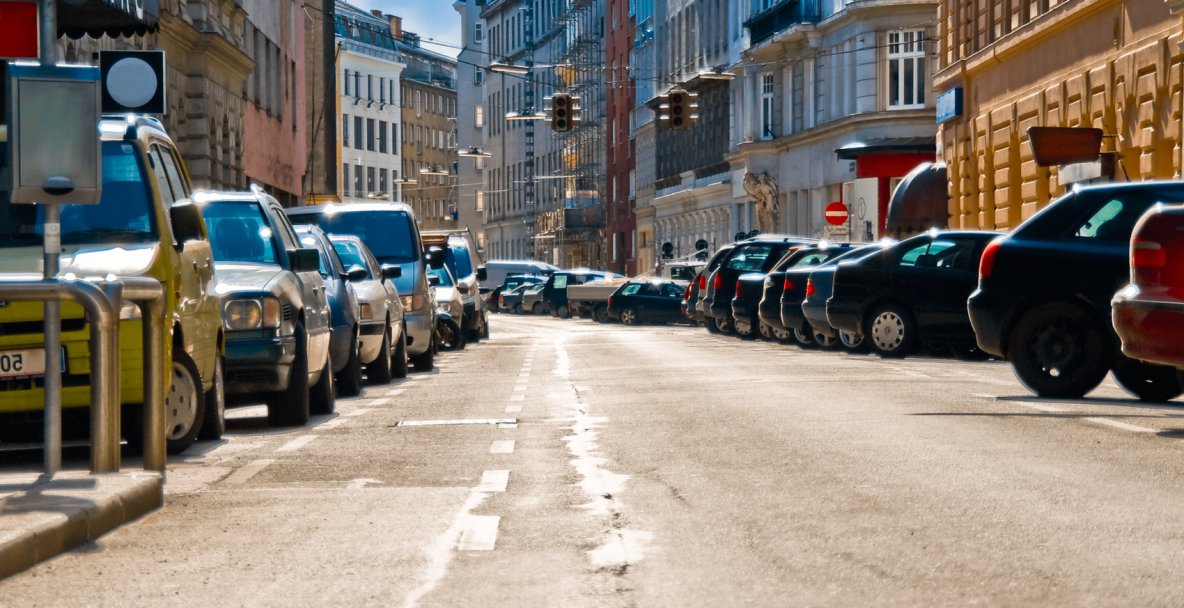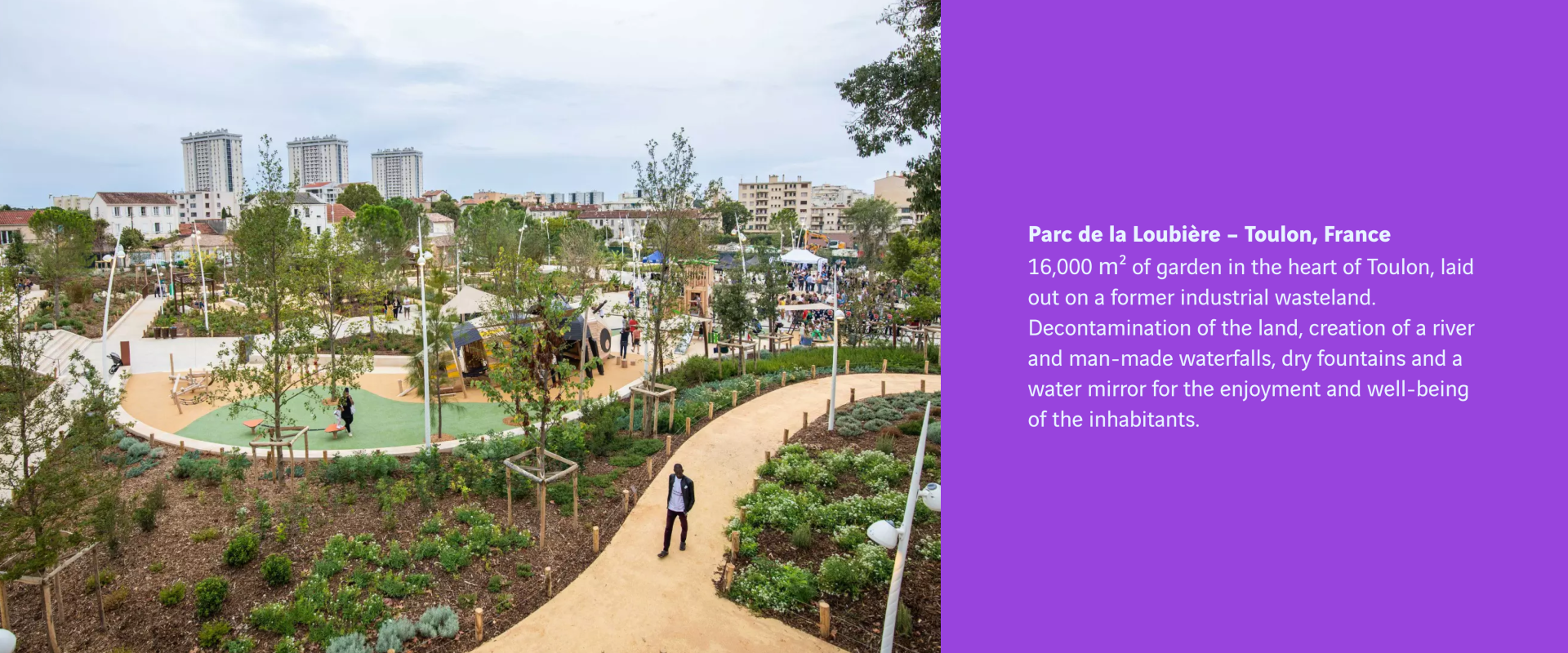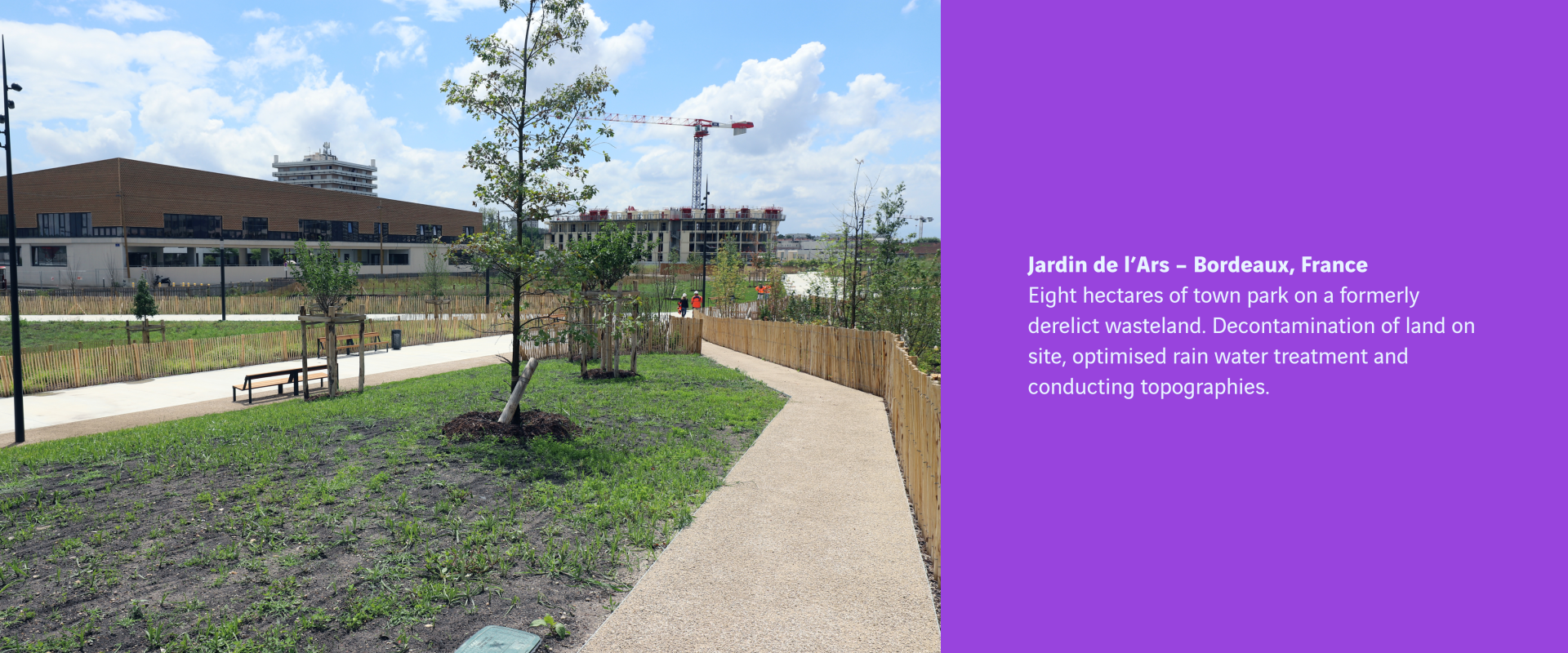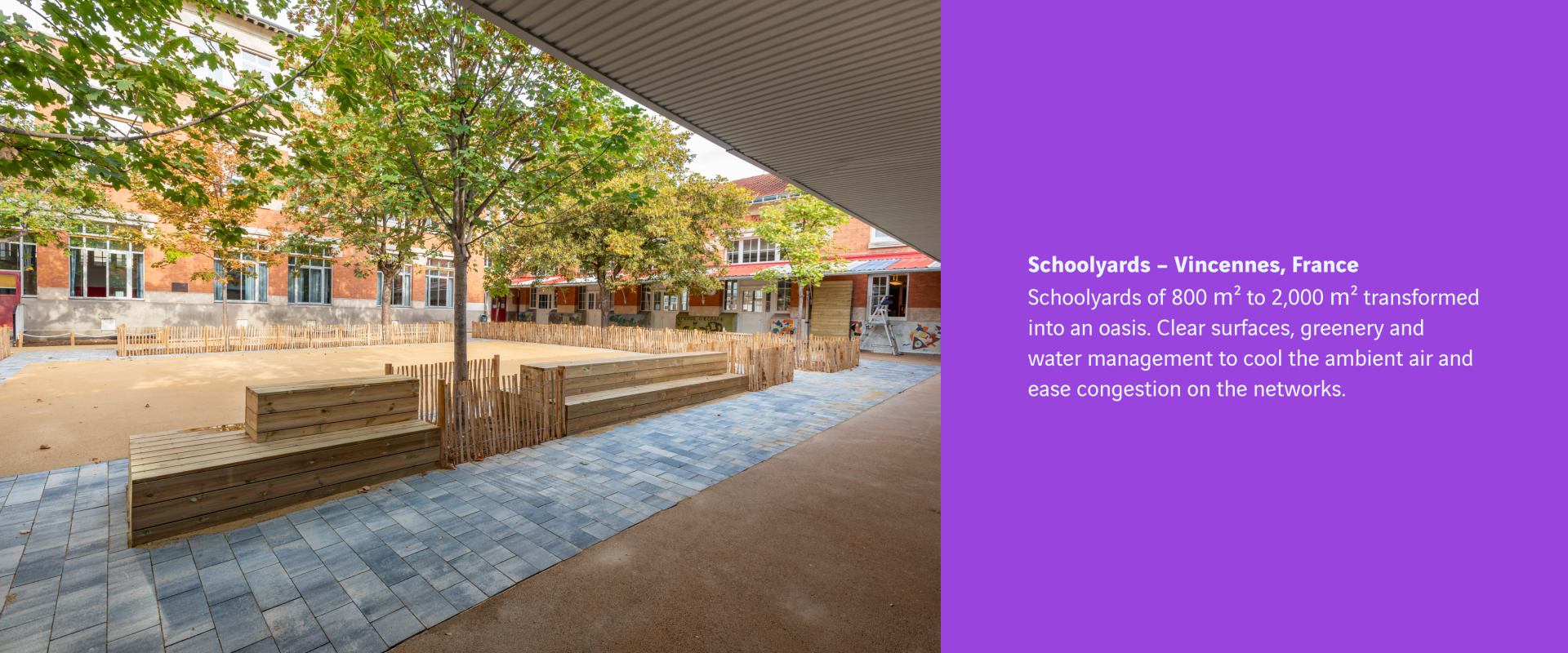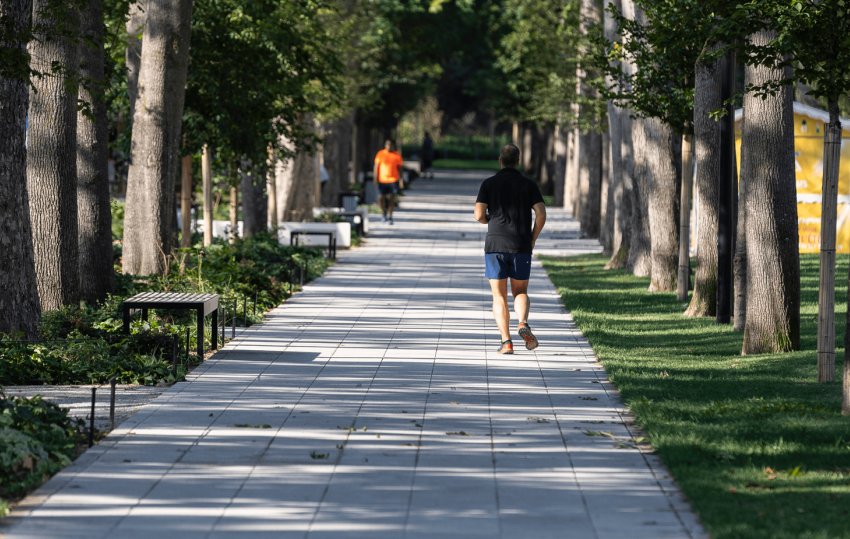
Urban cool islands: cooling down the cities
As prolonged heatwaves become more common, towns, cities and regions are adapting their outdoor spaces and centering rewilding in their climate adaptation strategies. A €1.5 billion green fund was therefore set up in France to help local authorities carry out their environmental transition. And as summer begins, towns and cities aim to combat urban heat islands by developing cool islands. Read on to find out more.
What is a heat island?
Climate change, land take and urban density contribute to rising air and ground temperatures in city centres – especially at night, when road surfaces release the heat they have absorbed throughout the day.
A number of factors combine to create a heat island – the materials used to create buildings (bricks, stone, concrete, etc.) and road surfaces (e.g. asphalt mixes), land use (i.e. building density), most often without plant cover, as well as human activities such as road traffic and the use of heating and air conditioning.
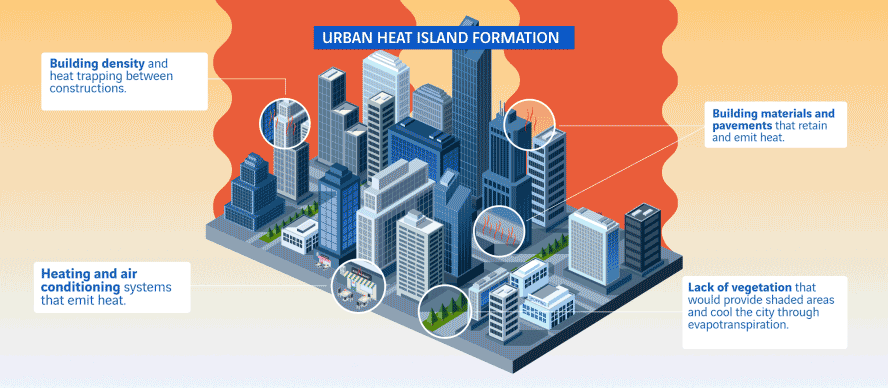
Contrary to a popular befief, pollution plays virtually no role in creating urban heat islands.
They're actually more dur to dense concentrations of buildings and impermeable surfaces.
Valery Masson, head of the urban climate research team at CNRM, France's national centre for meteorological research
The consequences for people’s health and well-being are numerous, and some areas and outdoor public facilities even become inaccessible during heatwaves due to high temperatures created by surfaces that retain heat or a lack of shade, for example.
Another negative effective of heat islands is the associated rise in energy consumption, and therefore expense, due to the increased use of air conditioning – which itself is a heavy polluter. Adaptation is key to avoiding overheating, keeping public areas as accessible as possible and ensuring cities remain attractive places to live.
How to create cool islands
Soil technologies and the development of innovative road surfaces are longstanding skills honed at VINCI Construction – and at the crossroads of this expertise comes Revilo®, a solution to create urban cool islands.
There are four ways we can refresh our cities and optimise rainwater management.
Getting water back on track
Soils in urban environments are usually altered and made permeable. In order for a cool island to be effective, the soil must be restored so it regains all of its original functions.
Restoring permeability to soils enables them to perform their functions within the ecosystem: letting water flow (infiltration) and storing it to encourage the development of the vegetation stratum.
At the scale of a garden or a neighbourhood, Revilo® helps to restablish the water cycle and brings rainwater back into a virtuous circle where it is a precious resource.
The lighter it is, the cooler we are!
The whitewashing of walls, roofs and streets on the islands of the Cyclades in Greece is neither a coincidence, nor a trend – it’s to do with the albedo effect.
This refers to the ability of a surface to reflect solar energy, and varies in line with the colour of that surface. The lighter a surface is, the more light it reflects; the darker it is, the more heat it absorbs, warming up its direct environment as a result.
When developing an urban cool island, ground surfaces must therefore be as light as possible in order to reflect sunlight and help limit the heating.
Pictures :
© Jean-François Badias
Most viewed
Explore more
Words from researchers: let's fight stereotypes!
Charlotte, a research fellow at École des Mines, and Erwan, a university professor and researcher at AgroParisTech, talk…
Fondation VINCI pour la Cité: opening the door to others is another way of reaching out!
With some 1.3 million organisations and 2 million employees, France can lay claim to a dynamic network of associations…
Sea water desalination: a solution for turning the tide on the water scarcity crisis?
As water shortages continue causing havoc in a growing number of regions around the world, an age-old idea is experiencing a…
